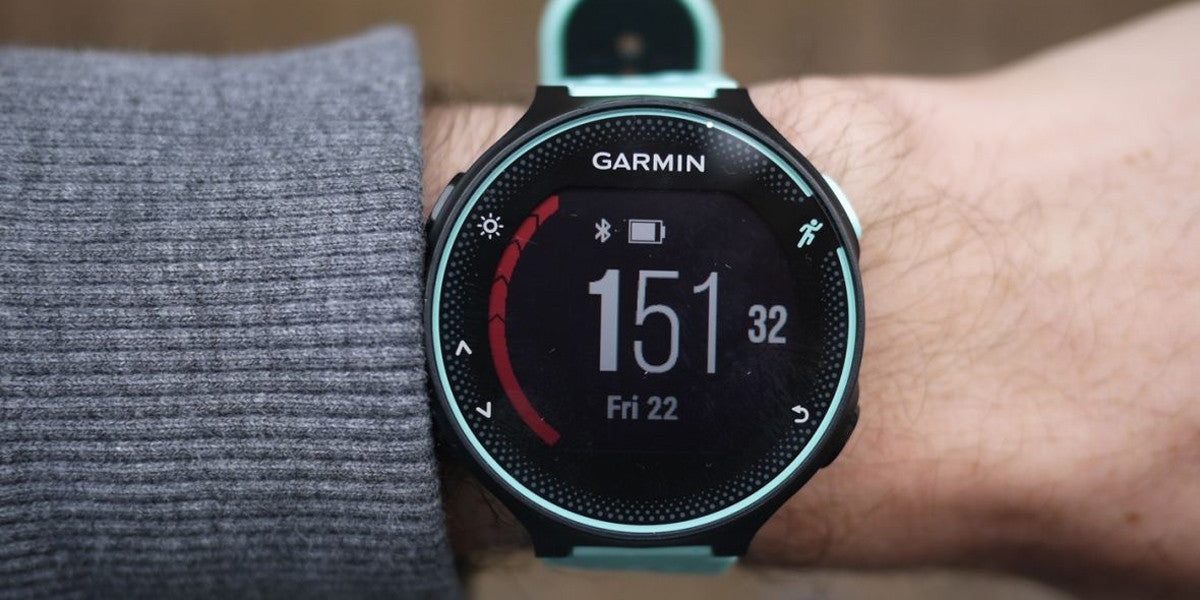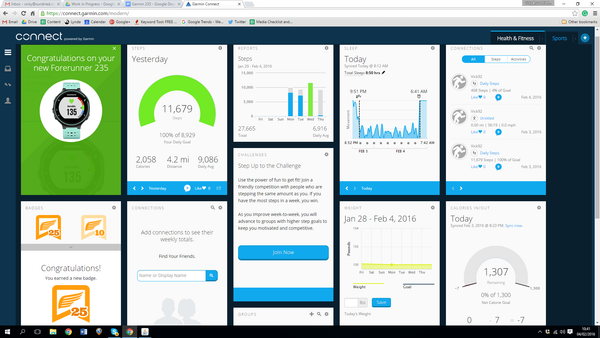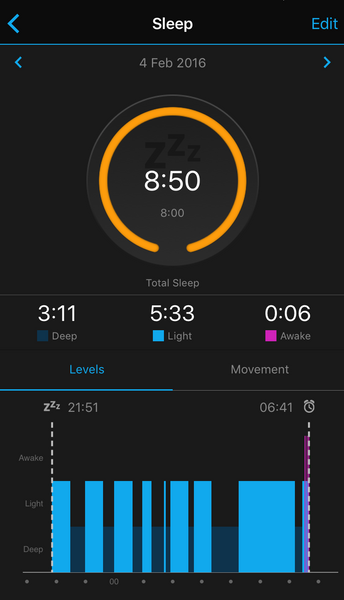
The Garmin Forerunner 235 is designed with a purpose, to bring out the best runner in you.
Appearance
The watch itself looks more mainstream than most fitness watches, although its plastic strap is a bit of a giveaway. The digital watch face is large and clear measuring 4 cm, with plenty of room for lots of readings to be detailed on the main watch face. The watch's five buttons are streamlined to the watch face but easy to select when needed. Despite its fairly large size, the watch weighs in at just 42g, making it one of Garmin’s lightest watches yet. The watch strap features multiple holes to provide a close fit and despite its large screen does not look as bulky as some of its competitors.

The USB charger features a small bulldog clip, which attaches to the side of the watch face, particularly useful to ensure the watch and charger remain attached even if they get knocked during charging.
Heart Rate Training
Starting a training session is easy: you simply select the start button and can then opt for which type of training you will be doing, from running outdoors or running indoors to cycling. The watch finds your heart rate almost immediately without the need to set up so this is a great feature. It was the same with the GPS, in fact, I found that 9/10 times my watch had already vibrated an alert to tell me GPS was ready before I headed outside. Once in training, there were 5 data fields to scroll through, the main being your heart rate screen, which colour codes your reading to your level of intensity. Your heart rate is presented clearly throughout your workout and I found it to be (for the most part) very effective when worn above the wrist bone. Scroll through for distance, time, pace, heart rate zone and lap readings. These are the automatic fields which the watch sets users up with, however as with almost every feature of this watch, these are customisable so the user can view other data such as cadence or temperature. It’s worth experimenting with the features until you find the ones best suited to your training style, with so many there’s bound to be some you find useful.
Recovery Time
Once your workout's complete the watch works it’s magic to estimate the amount of recovery time needed for your body to recuperate from the activity. This is a really useful tool for anyone developing their training routine or even to test the effectiveness of their current habits. By knowing what recovery is required the user can manage their workload accordingly and plan the intensity of their next session to achieve the most benefits from their performance.
Advanced Training
When running, users can opt for training intervals or finish time. Training interval workouts are based on distance or time. Wearers can then set their work to rest intervals and for how many repetitions or with an open-ending. This feature is great as it eliminates the need for using a separate app to count your intervals.
By connecting with Garmin Connect, advanced users can enter a training programme into their workout calendar or even download and follow workouts from the Garmin Connect IQ (which has plenty of choices) via the ‘my workouts’ key on the watch itself.
Garmin Connect and Garmin Connect IQ
The Garmin Connect app is simple and easy to use with lots of features to play with. You can check your personal best times, check your health stats, and see how many steps you've done. You can choose which widgets you want displayed on the page and it is fully customisable.

When exploring the many features of the website, you'll notice your options mimic those in the app, but just with more detail, more widgets and more things to customise. The Connect IQ is one of those pages you think you’ll just have a quick look at and could end up losing yourself for hours on end.

Move Alerts
The average adult in the UK spends 7-10 hours of their day seated and research has shown it can lead us to an early grave, with official guidelines concluding it's crucial to supplement long durations of sitting with a short burst of activity. Garmin’s move alerts prompt you with a gentle vibration after long periods of inactivity to get up and get moving. A red bar appears and you must move until the bar disappears, a simple concept that could improve your lifespan. I certainly found the vibrations useful as it’s easy to get engrossed in work and forget to add these bursts of short activity, which ultimately improve your wellbeing.
Sleep Monitoring
During the initial profiling of the Garmin, your regular sleeping patterns are entered and from then on the watch is able to monitor your sleep and also stop move notifications continuing whilst you’re not awake. The watch automatically detects between light and deep sleep, as well as the total amount of time spent asleep. This is a great feature to help monitor and perhaps improve performance, with sleep being vital to aid mental and physical fatigue and recovery.

Verdict
If you’ve got the time to master its vast array of data, this watch is almost faultless, providing precise heart rate and so much more. Whilst it is towards the higher price margin for fitness watches retailing at £269.99 on Garmin's website, with this device you get what you pay for. The Forerunner has the quantity of accurate data and the quality of Garmin, global leaders in their field.


